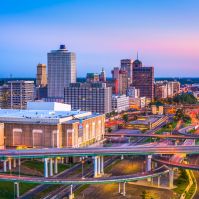 The final months of 2020 brought promising news of a vaccine rollout to protect against COVID-19. Your faith community members are undoubtedly relieved that an end to their separation from each other could be on its way within the year. Many church leaders debate what the rollout means for their particular congregations, and there are certainly quite a few decisions that need to be made to safeguard everyone involved. It's important to know how to navigate these conversations and arrive at conclusions that are both loving and responsible.
The final months of 2020 brought promising news of a vaccine rollout to protect against COVID-19. Your faith community members are undoubtedly relieved that an end to their separation from each other could be on its way within the year. Many church leaders debate what the rollout means for their particular congregations, and there are certainly quite a few decisions that need to be made to safeguard everyone involved. It's important to know how to navigate these conversations and arrive at conclusions that are both loving and responsible.
Following Guidelines
The creation of the vaccine does not mean that it's time to relax safety precautions. Even when people in your congregation start to get the vaccine, that does not magically make the public health crisis cease to exist. If anything, you should be more vigilant than ever. As the pandemic drags on well into the new year, caution fatigue is more likely to become a factor in how people choose to conduct themselves in their daily lives. The more risks that individuals in your community are taking, the more they put those around them at risk. Therefore, even as health care workers and more vulnerable members start to get vaccinated, you still need to stay aware of and comply with the most up-to-date CDC safety precautions.
Transitioning Formats
It's understandable that you want to start meeting again in person if you have not done so already. No matter how impressive and convenient your online services have been, they likely cannot replace the joy of a face-to-face worship experience. However, there are some questions you may need to answer before you dive back into in-person meetings:
- Are you going to require people to be vaccinated before they attend?
- If so, how will you respond if they refuse?
- If not, what boundaries will you set up to ensure everyone is still reasonably safe?
- How will you communicate expectations to the congregation?
- What elements, if any, of online worship will you continue?
There may be an expectation that everything will someday go back to normal. The specifics of what this means to different people may be very different things. You may have discovered something in the past year that has worked really well for your community. If that's the case, it's important to decide how you are going to incorporate it into your new schedule when you revert back to gathering for services. Even if you are planning to return to the exact worship format you had before the pandemic struck, it's still helpful to communicate that effectively to the congregation.
Considering Members
There may be members who are not comfortable meeting in person at all until the threat of the pandemic has completely passed. How are you going to serve these members and ensure that they are still kept in the loop and included in church life? This is a good reason to transition gradually. Consider livestreaming the first few months of services when you start gathering again so that everyone can benefit from them no matter what their personal comfort levels are. Although you may already have a start date in mind for a return to in-person meetings, it's still a good idea to make a virtual plan for all events so that you can offer online participation as an option. The church should always be looking for ways to include as many people as possible, and responding to members' differing comfort levels with compassion is an opportunity to practice extravagant acceptance.
The COVID-19 vaccine shows great promise for helping the country get the pandemic under control. Your church members are likely looking forward to the light at the end of the tunnel as more doses become available in your community. Have a plan and keep everyone informed about how you will transition back to in-person gatherings.



